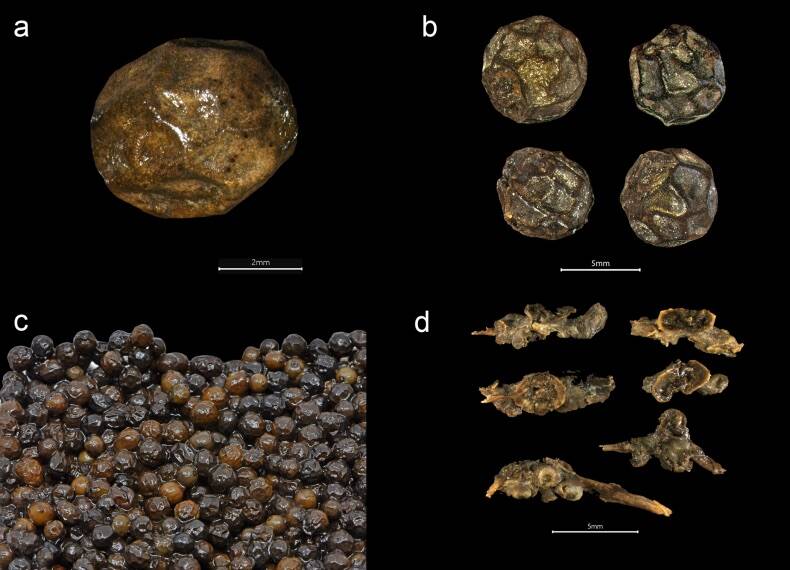The spices were found aboard the Gribshunden, a vessel that belonged to King Hans of Denmark and Norway and sank in 1495.

Vänehem Illustration/FacebookThe Gribshunden served as King Hans’ “Floating Castle.”
In 1495, the Danish warship Gribshunden exploded in the Baltic Sea off the coast of Sweden, sinking 36 feet into the watery depths below. The ship had served as King Hans of Denmark’s “floating castle,” and he carried a wealth of treasures on board — including a pantry full of exotic spices.
Remarkably, those spices remained immaculately preserved for over five centuries, according to a study published in the journal PLOS One.
“This is perhaps the most thrilling haul of spices from a shipwreck because of its age, quality of the plant remains — exotic, expensive spices — and the remarkable state of preservation,” study co-author Brendan Foley told Newsweek. “Beyond shipwrecks, this is certainly among the most fabulous discoveries of spices in any archaeological context, on land or sea.”
The haul represented more than 40 species of plants, many of which came from far-flung regions of the world. These included fruits, vegetables, nuts, and spices like saffron, clove, ginger, peppercorns, mustard, and dill.
“In the field, we knew that we had something special the moment the exotic spices appeared in the excavation,” Foley said.

Larsson, Foley/PLOS ONEBlack pepper recovered from the Gribshunden wreck.
The wreckage itself was rediscovered by divers back in the 1960s, but it was only recently that archaeologists began excavating the vessel — and discovered the spices.
But why would King Hans need to load up a warship with rare cuisine and expensive spices? The answer is quite simple: He wanted to flaunt his wealth and power.
“Exotic spices were status markers among the aristocracy in Scandinavia and around the Baltic Sea during the Middle Ages,” the study authors wrote.
The fact that these spices and foods were onboard highlights the importance of the circumstances surrounding the fateful voyage of the Gribshunden.
In 1495, King Hans and a retinue of courtiers, noblemen, and soldiers boarded the Gribshunden and departed from Denmark, setting sail for Sweden to attend a political summit. There, King Hans hoped to negotiate with a Swedish delegation to bring the entire Nordic region under his rule.

Wikimedia CommonsKing Hans of Denmark and Norway.
He sought to use the expensive foods and spices to impress Swedish officials by showing off how wealthy and powerful he — and by proxy, his kingdom — was.
“We see that King Hans and his social circle not only consumed these expensive delicacies, Hans also used the spices to demonstrate his wealth and global connections,” Foley said.
Had things gone according to plan, Hans would have impressed the Swedish delegation by presenting them with an array of exotic foods and spices, successfully convincing them to submit to his rule.
Instead, once the king had disembarked, an explosion destroyed his ship and sunk its valuable cargo into the sea. While this historical context adds to the remarkableness of the discovery, Foley believes there is more history to be gleaned from the wreckage.
“We also see from these spices the beginnings of the first true period of globalization,” he said. “Beginning in the late 1400s, the entire planet becomes connected in a way it never had been before. It’s the launch of the modern world, and a lot of it is due to the new class of ships like Gribshunden. Goods are traded and people are communicating across previously unimaginable distances.”
The design of the Gribshunden was similar to that of Christopher Columbus’ Santa María and other ships of the era that enabled European countries to expand into the “New World.”
“It’s our best look at what those ships must have been like,” Foley said. “It’s a well-preserved example of the enabling technologies that led to European domination of the planet after 1492.”
After learning about the 500-year-old spices found aboard the Gribshunden, read about the 400-year-old shipwreck that was touted as the “discovery of the century.” Or, learn about the divers who saved 900 bottles of 100-year-old booze from the wreckage of a World War I ship.





